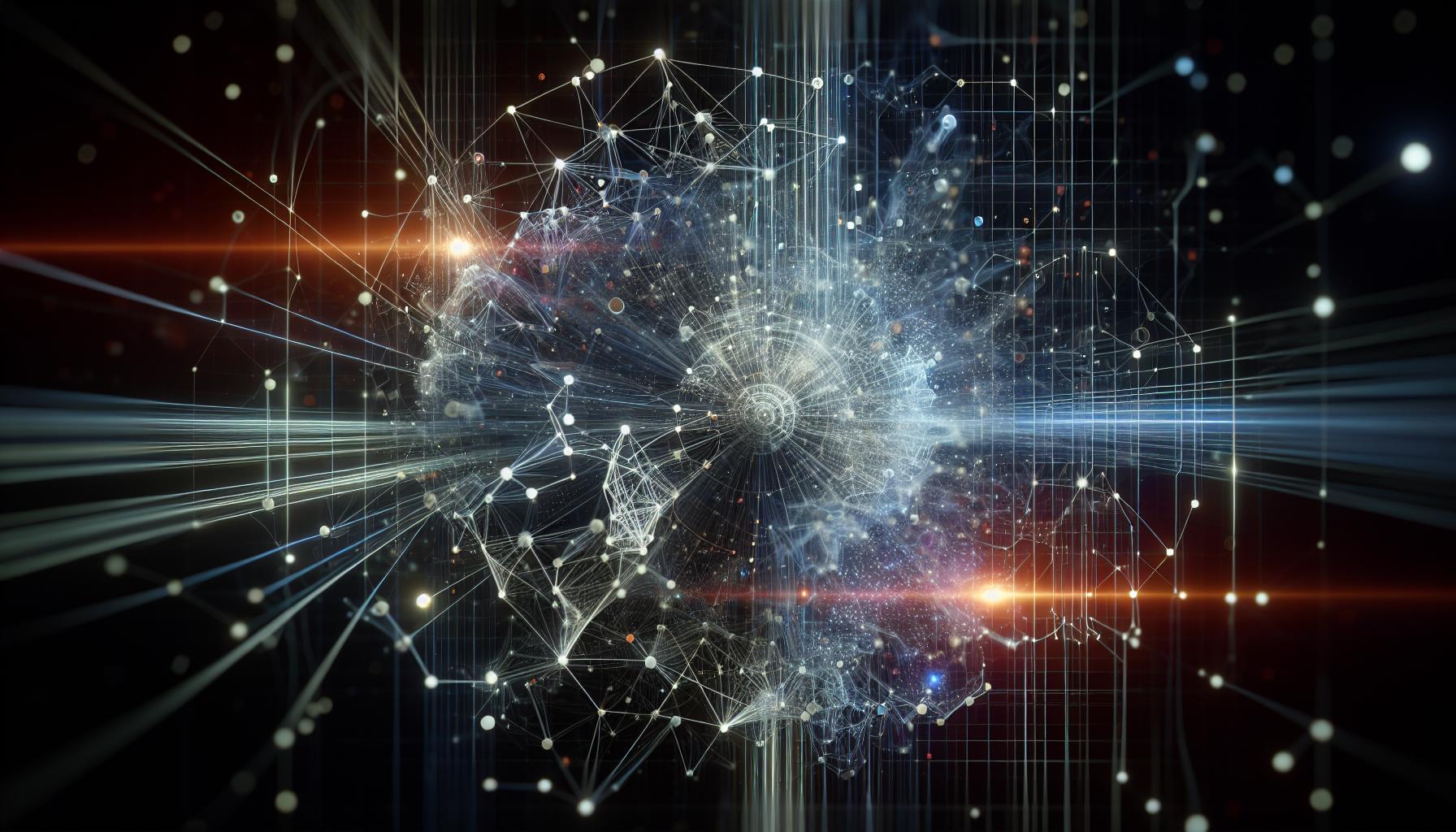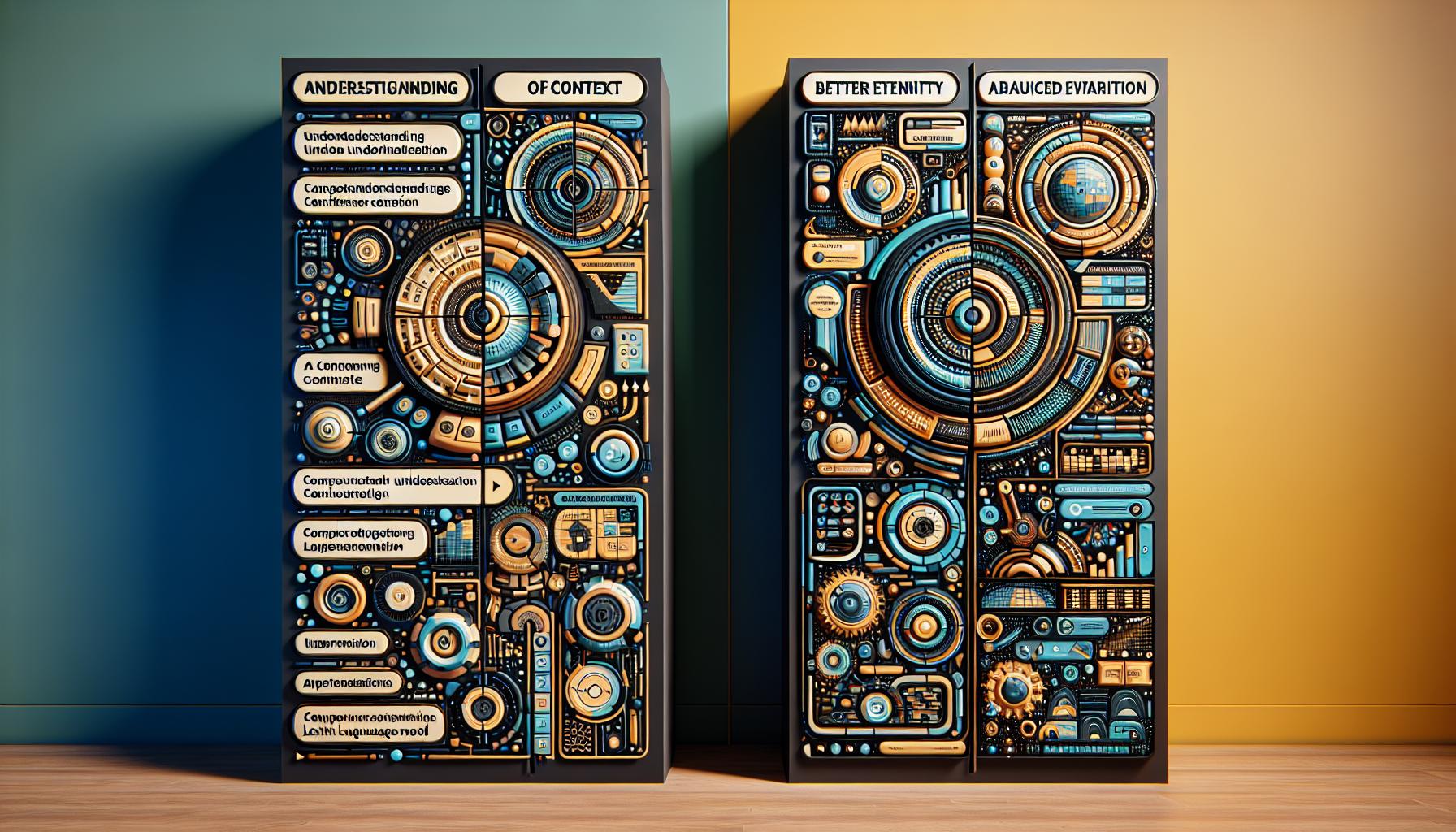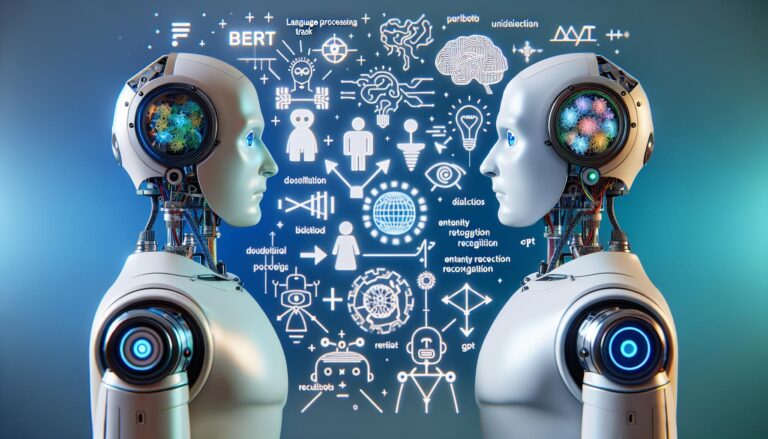Comparing GPT-3 and GPT-4: The Advancements in AI Chat Models
If you’re like me, you’re always on the lookout for the latest advancements in AI technology. That’s why I’ve been keenly following the evolution of OpenAI’s GPT models. The leap from GPT-3 to GPT-4 has certainly stirred up a buzz in the tech world, and for good reason.
GPT-3, with its impressive language generation capabilities, has already made a mark. But it’s the arrival of GPT-4 that’s got everyone talking. How does it stack up against its predecessor? Is it really a game-changer? Let’s delve into the intriguing world of these chatbots and find out.
PowerBrain AI Chat App powered by ChatGPT & GPT-4
Download iOS: AI Chat
Download Android: AI Chat
Read more on our post about ChatGPT Apps & AI Chat App
Key Takeaways
- GPT-3, produced by OpenAI, showcases impressive language generation capabilities with its 175 billion machine learning parameters, allowing it to generate creative and coherent output. However, it lacks contextual understanding, which can result in output that occasionally comes off as off-topic or nonsensical.
- GPT-4 is predicted to redefine system comprehension and generation of human language, boasting an increase in machine learning parameters beyond GPT-3’s 175 billion. This enhancement is expected to improve the authenticity of content generation but may also heighten the risk of misuse and misinterpretation.
- GPT-3’s robust language generation abilities allow it to generate detailed and creative content, maintain context across multiple paragraphs, and write about an extensive range of topics. However, inconsistency in text quality and issues maintaining a consistent entity across long discourse remains challenging.
- GPT-4 introduces substantial improvements, including a better understanding of context, improved consistency over extended texts, an enhanced understanding of entities, and increased proficiency in generating diverse types of text.
- A comparative analysis shows a clear evolution from GPT-3 to GPT-4. Improvements are particularly notable in context understanding, consistency in long texts, entity understanding, and textual diversity.
- While both GPT-3 and GPT-4 have their limitations, the advancements in GPT-4 hint at the endless potential of AI evolution and improvement, setting a higher benchmark in the AI spectrum.
Understanding GPT-3

As we dive deeper into the world of AI, it’s essential to grasp the mechanics fueling this system. So, let’s start with GPT-3, or Generative Pretrained Transformer 3, produced by OpenAI. This model is more than your ordinary chatbot.
GPT-3 is a machine learning model known for its prowess in language understanding tasks. It’s no novice when it comes to generating human-like text. The magnitude of its capabilities is stunning. GPT-3 has been trained on a diverse range of internet text as an AI language model. It’s important to take into account that GPT-3 does not know anything “specifically” but instead identifies patterns in the data it was trained on and applies this learning to generate creative and coherent output.
One distinguishing aspect of GPT-3 is its size, measured in parameters. GPT-3 boasts an impressive 175 billion machine learning parameters. But what exactly does that mean? In essence, these parameters are the aspects of the model that have been learned from the training data. The higher the number, the more refined and nuanced the model’s understanding can be.
Read more
Claude vs ChatGPT
BERT vs GPT-4
Gemini PRO vs Chat GPT-4
Chat GPT vs Jasper
Chat GPT no restrictions
Connect ChatGPT to internet
Chat GPT no login
Remember, though, while GPT-3 is impressive, it’s not perfect. Its lack of contextual understanding can sometimes lead to nonsensical or off-topic results. And there’s also the ethical dilemma: GPT -3 can potentially generate misleading information or be used maliciously.
This understanding of GPT-3 sets a clear foundation as we step further into the AI evolution. This overview provides the baseline we need to explore its successor, GPT-4. Moving forward, we’ll delve into the comparisons of GPT-3 and GPT-4, dissecting their similarities and differences. After all, it’s pivotal to understand the past and present before peering into the future. So, let’s keep going.
Introduction of GPT-4

GPT-3’s grasp of text generation left us impressed, if not a bit wary. Now, let’s dive into the bold territory of GPT-4 and see what lies beyond the 175 billion parameters of its predecessor.
GPT-4 is anticipated to be an evolution in the world of AI-powered language models. That’s it — I’ve narrowed down its most definitive trait. More than just an upgrade, GPT-4 is expected to redefine the way systems comprehend and generate human language.
Why so? For one, it’ll harness unprecedented quantities of machine learning parameters. I’m talking about numbers that dwarf GPT-3’s 175 billion. This model will accommodate more information to push the text generation boundaries further. It’ll learn from a wider range of linguistic styles, tones, and contexts, enhancing the authenticity of the content it generates.
However, GPT-4 carries a higher risk of misinterpretation and misuse along with this potential. Ethical challenges may become more pronounced as the model gains severe complexity. It’s not just about how well it can mimic human-like text generation. It’s also about striking the right balance between capability and controllability.
Pioneers like OpenAI are actively aware of these potential hurdles. As GPT-4 inches closer to real-world application, they’re gearing up to cope with the challenges that this incredible model could pose. Efforts are being made to ensure that AI continues to be a boon rather than a bane for human society.
Keeping an open mind is crucial as we delve deeper into this exciting new frontier. The future of AI like GPT-4 isn’t solely locked in robotic predictions — it’s a dynamic junction where technology meets ethics, caution, and potential.
Language Generation Capabilities of GPT-3
GPT-3, the predecessor to the much-awaited GPT-4, has amazed technologists around the globe with its robust language generation capabilities. This AI-powered language model, developed by OpenAI, is a real game-changer. It is trained with 175 billion machine learning parameters, which it uses to perform tasks like translation, article writing, and coding problems.
One of the most enticing features is GPT-3’s prowess at contextual understanding. Traditional language models usually struggle to keep a context for longer sentences. In contrast, GPT-3 manages to maintain the context across multiple paragraphs. This kind of contextual understanding enables it to maintain a conversation that feels much more engaging and natural.
GPT-3 has shown exemplary performance when generating human-like text. For instance, take its applications in content generation; GPT-3 can generate incredibly detailed and creative fiction stories, articles, and even poetry! It’s capable of writing about a wide range of topics with remarkable accuracy.
Despite these capabilities, it’s worth noting that GPT-3 still has its limitations. While it certainly impresses with its text generation, it’s known for inconsistency in text quality. Sometimes, the language seems vague or irrelevant. Moreover, maintaining a consistent entity over a long discourse remains a challenge for GPT-3.
Next, let’s dwell on the details of GPT-3’s successor, GPT-4.
Enhanced Features of GPT-4

When it comes to advancements in language models, GPT-4 stands out with its striking list of enhanced features. Incomparability to its predecessor becomes clear as we delve into what GPT-4 has to offer.
One of the core advancements is better context understanding. GPT-4 unsurprisingly outshines GPT-3 in comprehending the context and tailoring the responses accordingly. Its ability to grasp and adapt to shifting dialogues is certainly a game-changer in the AI universe.
Moving forward, GPT-4 shows a stellar improvement in consistency over extended texts. Where GPT-3 often struggled to maintain a uniform tone and factual consistency throughout longer conversations or writings, GPT-4 takes this challenge head-on, providing improved coherence and faithfulness to the original context.
Further, GPT-4 impresses with greatly improved entity understanding. Where GPT-3 faced criticism for often mixing phrases or failing to maintain continuity, GPT-4 shows an acute ability to identify and track entities across a wide range of discourse, reinforcing the sophistication of AI-powered language models.
Still, let’s not forget the increased proficiency in diversity with GPT-4. The sheer versatility of this model enables it to generate a broad array of text types, from fiction to technical articles, without compromising on quality or accuracy, keeping the output engaging and meaningful regardless of the genre.
To tally the key improvements of GPT-4 against GPT-3, let’s look at the table below:
| Improvement in GPT-4 | GPT-3 flaws |
|---|---|
| Better context understanding | Poor comprehension of shifting dialogues |
| Consistency over extended texts | Lack of continuity in long conversations |
| Enhanced entity understanding | Inability to keep track of continuous entities |
| Increased proficiency in diversity | Limited capabilities in generating varying text types |
The introduction of GPT-4 has indeed set a new benchmark in the artificial intelligence sector. But as phenomenal as this progress is, the journey doesn’t end here. The AI industry is continuously evolving, and thus, so are the expectations from these AI models. The exploration of what lies beyond GPT-4 very well may be at our doorstep.
A Comparative Analysis
Moving the spotlight onto GPT-3 and GPT-4, it’s crucial to make a comparative analysis to observe the evolution and improvements.
GPT-3 was already a massive leap from its predecessor with 175 billion machine learning parameters. It could produce startlingly human-like text but was often weak in understanding context, maintaining consistency over longer texts, and generating a wide variety of text types.
Transitioning to GPT-4, improvements are unmissable, and its intelligence level is significantly higher. It’s flaunting enhancements in areas that were known flaws in GPT-3. To delve deeper, let’s break it down.
With GPT-4, context understanding has taken a leap forward. Where GPT-3 would sometimes struggle to comprehend intricate contexts or instructions, GPT-4 appears to have a better grasp. This has effectively led to an improvement in generating more relevant, contextual content.
Moreover, GPT-4 exhibits consistency over extended texts, a quality that GPT-3 was lacking. This results in a more coherent and fluid narrative, which greatly enhances the reader’s experience.
Entity understanding, another concern with GPT-3, has been rectified to a great extent with GPT-4. It comprehensively identifies and understands distinct entities in the text, ensuring even better content generation.
Finally, the proficiency of GPT-4 in generating diverse text types is commendable. Unlike GPT-3, it doesn’t tend to sound monotonous, reflecting its versatile capabilities.
Comparing the two generations of AI models, here is a brief data overview:
| Features | GPT-3 | GPT-4 |
|---|---|---|
| Context Understanding | Moderately proficient | Significantly improved |
| Extended Text Consistency | Less consistent | Highly consistent |
| Entity Understanding | Struggles often | Better grip |
| Text Diversity | Limited | Highly diverse |
To wrap this up, the advent of GPT-4 has stepped up the game in language generation, setting an even higher benchmark in the AI spectrum. It embodies the future of AI we’ve been envisaging, proving that the possibilities with AI are only expanding.
Conclusion
It’s clear that GPT-4 has raised the bar in the AI world. Its enhanced context understanding and consistency have surpassed GPT-3 in more ways than one. The strides made in entity understanding and diverse text generation are noteworthy, addressing GPT-3’s limitations head-on. The comparison table doesn’t lie – GPT-4’s capabilities are a leap forward. As we look towards the future, it’s exciting to envision how AI models will continue to evolve, pushing the boundaries of what’s possible. GPT-4 isn’t just an upgrade; it’s a milestone in the ongoing journey of AI development.
Frequently Asked Questions
1. What is the main difference between GPT-3 and GPT-4?
The primary differences lie in GPT-4’s improved context understanding, enhanced consistency over long texts, better entity understanding, and proficiency in generating assorted text types, addressing the limitations of GPT-3.
2. How does GPT-4 address the issues in GPT-3?
GPT-4 addresses the shortcomings of GPT-3 by improving understanding of contexts, maintaining consistency in extended texts, understanding entities effectively, and exhibiting expertise in generating various text types.
3. What is the impact of GPT-4 on the field of AI?
The introduction of GPT-4 sets a new standard in artificial intelligence, emphasizing the constant evolution of AI models and opening up expansive possibilities for the future.
4. What does the comparison table highlight?
The comparison table highlights the superior capabilities of GPT-4 over GPT-3, showcasing noticeable advancements in varied aspects like context and entity understanding, textual consistency, and text-type diversification.
5. What can we expect beyond GPT-4 in the realm of AI?
Given the constant evolution of AI models, we can anticipate further advancements beyond GPT-4. The expanded potential of AI promises more sophisticated and competent models in the future.
















